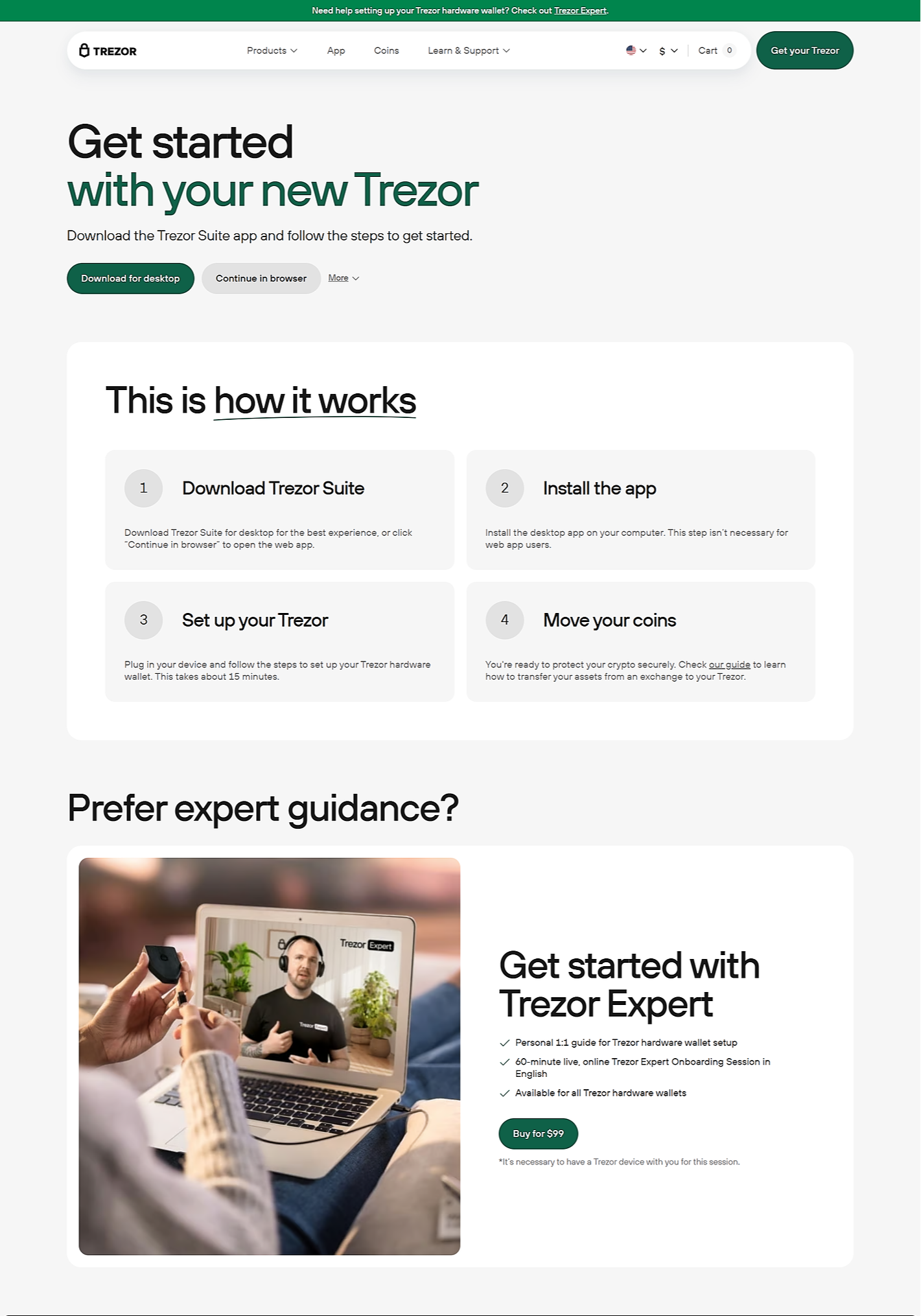

Trezor Bridge: A Step-by-Step Guide
Introduction to Trezor Bridge
Trezor Bridge is a communication tool that allows your Trezor hardware wallet to interact securely with the Trezor Suite web interface. It ensures a stable and encrypted connection between your device and your computer, enabling you to manage your cryptocurrencies safely.
This guide will walk you through the installation, setup, and troubleshooting of Trezor Bridge in a step-by-step manner.
Step 1: Downloading Trezor Bridge
-
Visit the Official Trezor Website
-
Open your browser and go to https://trezor.io/.
-
Navigate to the "Downloads" section.
-
-
Select Trezor Bridge
-
Choose the version compatible with your operating system (Windows, macOS, or Linux).
-
Click "Download" to get the installer file.
-
Step 2: Installing Trezor Bridge
For Windows Users
-
Run the Installer
-
Locate the downloaded
.exefile and double-click to run it. -
Follow the on-screen instructions.
-
-
Allow Permissions
-
If prompted by User Account Control (UAC), click "Yes" to allow installation.
-
-
Complete Installation
-
Wait for the process to finish.
-
You may need to restart your computer.
-
For macOS Users
-
Open the DMG File
-
Double-click the downloaded
.dmgfile.
-
-
Drag to Applications
-
Drag the Trezor Bridge icon into the Applications folder.
-
-
Run the Application
-
Open Finder, go to Applications, and launch Trezor Bridge.
-
For Linux Users
-
Install via Terminal
-
Open Terminal and navigate to the download directory.
-
Run the appropriate command (
.debfor Debian/Ubuntu,.rpmfor Fedora).
Example for Debian:
sudo dpkg -i trezor-bridge_x.x.x_amd64.deb
-
-
Start the Service
-
The bridge should start automatically. If not, run:
sudo systemctl start trezor-bridge -
Step 3: Connecting Your Trezor Device
-
Connect Your Trezor Wallet
-
Plug your Trezor device into your computer using a USB cable.
-
-
Open Trezor Suite
-
Visit https://suite.trezor.io/ in your browser.
-
-
Check Connection
-
If Trezor Bridge is installed correctly, your device should be detected automatically.
-
Step 4: Troubleshooting Common Issues
1. Trezor Not Detected
-
Ensure Trezor Bridge is running.
-
Try a different USB port or cable.
-
Restart your computer.
2. Browser Compatibility Issues
-
Use Chrome, Firefox, or Brave for best results.
-
Disable conflicting browser extensions.
3. Firewall/Antivirus Blocking Connection
-
Add Trezor Bridge to your firewall’s whitelist.
-
Temporarily disable antivirus to test the connection.
Conclusion
Trezor Bridge is essential for a seamless connection between your Trezor hardware wallet and Trezor Suite. By following this guide, you can install, set up, and troubleshoot any issues efficiently.
For further assistance, visit Trezor’s official support page.
This guide ensures a smooth experience with your Trezor device. Always download software from official sources to avoid security risks.